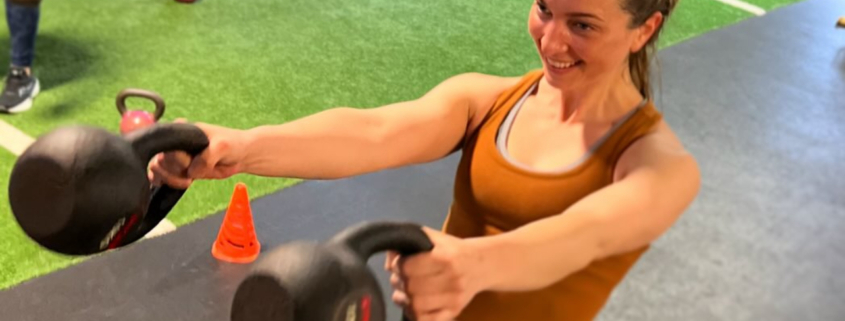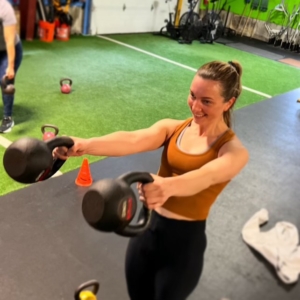Kettlebell Snatch Like a Pro!
The kettlebell snatch is an awesome, full body exercise that offers benefits to strength, power and conditioning. Some kettlebell experts believe the snatch is the king of kettlebell exercises and unlike the barbell Olympic squat style snatch you are far less likely to injury yourself. Read on to explore the advantages of the kettlebell snatch, the muscle groups involved, how to perform the exercise correctly, and a sample workout to incorporate it into your fitness routine.
Top Four Benefits of the Kettlebell Snatch:
1. Full-Body Workout:
The kettlebell snatch engages multiple muscle groups simultaneously, making it an excellent exercise for athleticism, overall strength and conditioning. It targets the shoulders, back, hips, glutes, hamstrings, and core, providing a comprehensive full-body workout.
2. Increased Power and Explosiveness:
The explosive nature of the kettlebell snatch helps improve power and explosiveness. As you generate force from the hips and transfer it through your body to propel the kettlebell overhead, you develop strength and speed, which can be beneficial in various sports and activities.
3. Improved Cardiovascular Fitness:
Performing the kettlebell snatch at a high intensity can elevate your heart rate and challenge your cardiovascular system. This exercise can be a time-efficient way to improve cardiovascular fitness while also building strength and endurance.
4. Enhanced Grip Strength:
The kettlebell snatch requires a strong grip to control and stabilize the kettlebell throughout the movement. Regular practice of this exercise can help develop grip strength, which is essential for many daily activities and sports.
Muscle Groups Involved:
The kettlebell snatch primarily targets the following muscle groups:
1. Shoulders: The deltoids and rotator cuff muscles are heavily engaged during the upward phase of the snatch when you raise the kettlebell overhead.
2. Back: The snatch recruits the muscles of the upper and lower back, including the latissimus dorsi, rhomboids, and erector spinae, to maintain a stable and upright posture throughout the movement.
3. Hips and Glutes: The hip extension is a key component of the kettlebell snatch. The gluteus maximus and hamstrings are responsible for generating power and driving the kettlebell upward.
4. Core: To perform the snatch efficiently, you need to engage your core muscles, including the rectus abdominis, obliques, and transverse abdominis, to maintain stability and prevent excessive movement of the spine.
How to Perform the Kettlebell Snatch:
1. Start with the kettlebell approximately 12 inches in front of you with your feet in a hip-width stance.
2. Hinge at the hips and grab the kettlebell handle with one hand, keeping your back flat and core engaged.
3. Hike the kettlebell back between your legs like a football.
4. Drive through your heels and extend your hips explosively, swinging the kettlebell upward. Guide the kettlebell up close to your body.
4. As the kettlebell reaches shoulder level, retract your arm slightly, pulling your elbow back and then punch your hand through the handle.
5. Lock out your arm and stabilize the kettlebell overhead.
6. We recommend beginners lower the kettlebell to their shoulder and then and then guiding it down and back towards their hips into a powerful back swing.
7. Repeat for the desired number of reps!
Sample Workout:
Here is a sample workout involving the kettlebell snatch:
1. Warm-up: Perform some dynamic stretches and mobility exercises for the shoulders, hips, and core.
2. Circuit: Perform 3-4 rounds of the following exercises with minimal rest between each exercise and a short rest between rounds:
– Kettlebell Snatch: 10-12 reps per arm
– Goblet Squat: 10-12 reps
– Push Up: 10-12 reps
3. Finisher: Complete a Tabata-style finisher by performing kettlebell snatches for 20 seconds, followed by 10 seconds of rest, repeated for a total of 4 minutes.
Remember to start with a weight that allows you to perform the exercise with proper form and gradually increase the intensity as you become more proficient. It is also crucial to consult with a qualified fitness professional before starting any new exercise program, especially if you have any underlying health concerns or injuries.
CLICK BELOW To Meet with a Coach and Check Out The Gym!





